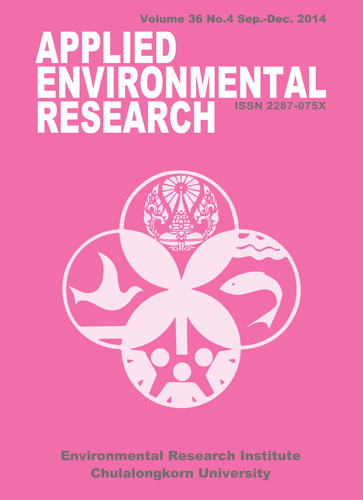Production of Natural Dyed Palm Yarns and Fabrics
Main Article Content
Abstract
Palm fibre is a waste product from the fruit crushing-extracting process in local communities. This study examined the characteristics of natural dyed palm yarns and fabrics produced from treated palm fibres. The results showed that fibre characteristics were improved by anaerobic fermentation, and following crushing and carding, were 3-5 times smaller, softer and more pliable. In the production of palm/cotton yarns of No. 7 (50/50), No.10 (40/60), No.16 (30/70) and No.10 (0/100), the 3-5 denier palm yarns and cotton yarns were spun in open-end spinning units. Regarding the physical properties, the blended yarns showed more unevenness and higher tensile strength and elongation at break than 100 % cotton yarn. However, it was found that the coarser yarns were lower in strength than the finer yarns. Fibre sorting by denier leads to a decrease in unevenness caused by thin and thick patches and neps. When dyed with natural dyes, the palm yarns were found highly fast to light, but only moderately fast to washing. Dark dye spots distributed on the palm fibre yarns formed a natural pattern structure in the woven textiles. The tested woven textiles from the weft palm yarns are lighter in weight and higher in tensile force and tear strength than their cotton counterparts. The results suggest that palm fibre yarns should be promoted and introduced in Thai textile craft markets to provide diversity and added value to Thai textiles. Moreover, this study offers an opportunity to use palm waste to provide an alternative income source while preserving the environment in local communities. Such community-level industries may provide a sound basis for sufficiency community economies and green textile product development.
Article Details

This work is licensed under a Creative Commons Attribution-NonCommercial 4.0 International License.
Published articles are under the copyright of the Applied Environmental Research effective when the article is accepted for publication thus granting Applied Environmental Research all rights for the work so that both parties may be protected from the consequences of unauthorized use. Partially or totally publication of an article elsewhere is possible only after the consent from the editors.

